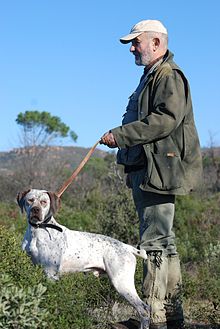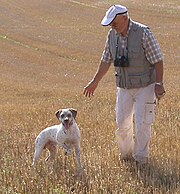Recreation
In 1970, Michel Comte decided to look for the last dog that had some Bourbonnais blood. He found only mixed breed dogs, which had some characteristics of the Braque du Bourbonnais (size, shape of the head, short tail). After some more or less inbred litters, he registered his first Bourbonnais on the LOF (under Titre Initial procedure) in 1973, 1974, and 1975; from then, several breeders joined him, who, from those dogs, created their own lines, and the number of births increased. [1] [2]
In 1981, the Club du Braque du Bourbonnais was recreated. [3] Michel Comte was its president until 2001. From this moment, the successes of the Bourbonnais in field trials made the breed thrive.
In 1988, the first Bourbonnais was introduced in the USA. Since then the breed has been growing in that country, which became the second producer of Bourbonnais pointers after France. [4]
This page is based on this
Wikipedia article Text is available under the
CC BY-SA 4.0 license; additional terms may apply.
Images, videos and audio are available under their respective licenses.







